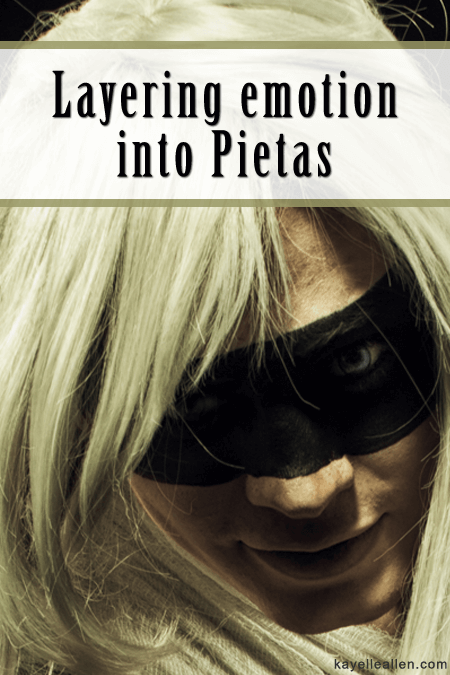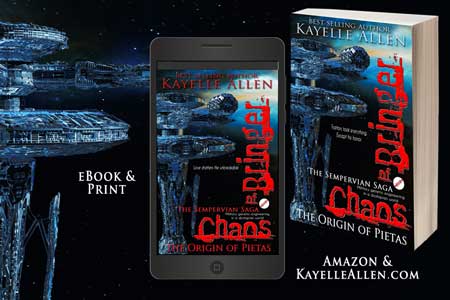 What does layering emotion into characters mean? Isn’t writing: “No!” he screamed angrily telling instead of showing? Yes, it is. So how do you add emotion without telling the reader what the emotion is? Here’s how to show, not tell.
What does layering emotion into characters mean? Isn’t writing: “No!” he screamed angrily telling instead of showing? Yes, it is. So how do you add emotion without telling the reader what the emotion is? Here’s how to show, not tell.
To layer emotion, look at two things.
To add emotion to your writing, look at verbs and nouns. Before you heave something at the screen, let me show you what I mean. This is the opening paragraph of my upcoming military science fiction novel, Bringer of Chaos: Forged in Fire. I wanted to show that the main character, Pietas, is unhappy about being in a dark forest. He feels trapped. It’s closing in on him, but you can’t write that. It’s telling. So I focused on words that had a negative connotation instead. Here’s the first paragraph:
Would this incessant nightmare of darkness never end? The steaming, lightless rainforest stank of alien spores and enough flowers to choke the dead. Let the others inhale all they wanted, but this cloying scent left a sickening taste in his mouth. Pietas gagged, but controlled his stomach.
Verbs
Here is the same paragraph with the verbs highlighted in red.
Would this incessant nightmare of darkness never end? The steaming, lightless rainforest stank of alien spores and enough flowers to choke the dead. Let the others inhale all they wanted, but this cloying scent left a sickening taste in his mouth. Pietas gagged, but controlled his stomach.
The first verb, would, is passive, but used to ask a question with a negative connotation, which lends power. The rest have their own inferences, mostly negative. Since the goal is to show the character feels trapped, using verbs with negative concepts helps set the emotional stage.
Examine the verbs in your own first paragraph, or whatever section you think needs more emotional impact. How can you alter them to convey the emotion your character is experiencing? Is it positive?
Here’s the same paragraph, in the same location, experienced by a person who loves the setting.
The enveloping darkness cocooned him like warm gloves, blocking unwelcome light and filling the air with the scent of flowers. Others in his party failed to appreciate the floating spores and drifting pollen; he glimpsed the magnificence of this alien world through its ancient forest. He inhaled, drawing in its sweet fragrance.
By describing the setting with an eye toward emotional descriptions, you can alter the reader’s perception and let them see the character’s point of view.
Writers build emotion by choosing powerful verbs and nouns Click To TweetNouns
Here’s the paragraph with nouns highlighted in red.
Would this incessant nightmare of darkness never end? The steaming, lightless rainforest stank of alien spores and enough flowers to choke the dead. Let the others inhale all they wanted, but this cloying scent left a sickening taste in his mouth. Pietas gagged, but controlled his stomach.
 It evokes uneasiness with words like nightmare, darkness, spores, dead. The adjectives and adverbs around the nouns add to it: incessant, never, steaming, lightless, alien, wanted, cloying, sickening. All the words are negative or lean toward the negative. In the end, the reader knows exactly what the character is feeling without coming out and telling them.
It evokes uneasiness with words like nightmare, darkness, spores, dead. The adjectives and adverbs around the nouns add to it: incessant, never, steaming, lightless, alien, wanted, cloying, sickening. All the words are negative or lean toward the negative. In the end, the reader knows exactly what the character is feeling without coming out and telling them.
By the next page, Pietas finally escapes the gloomy forest. The paragraph that describes his joy never says “He was happy” but you get it. He burst into the welcome light, squinting and shielding his face. After hours tramping through deep shadow, the noonday heat caressed his head and shoulders like a friend, hoped for but long lost.
Build emotion by choosing powerful verbs and nouns that evoke the feeling you want to convey. Your readers will fall in love with the story, empathize with the characters, and scout out more of your work.
